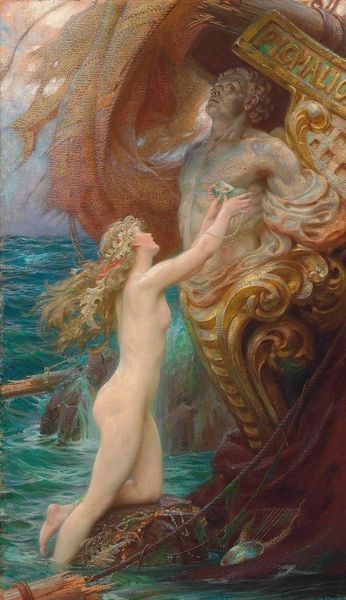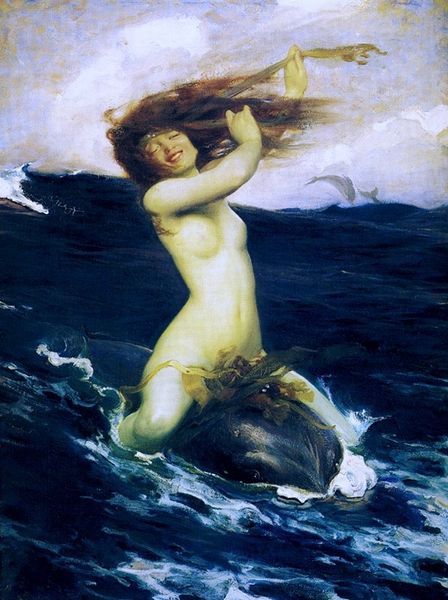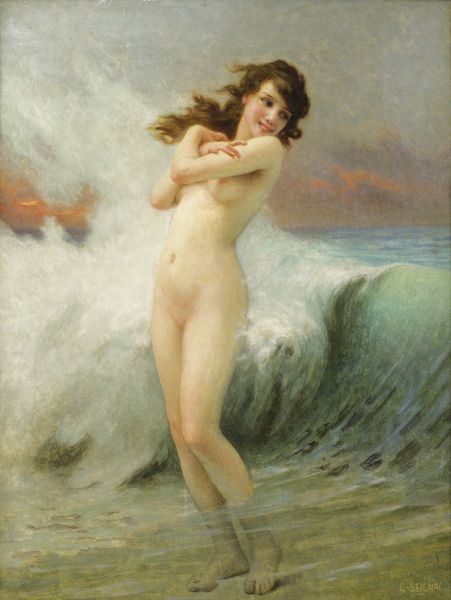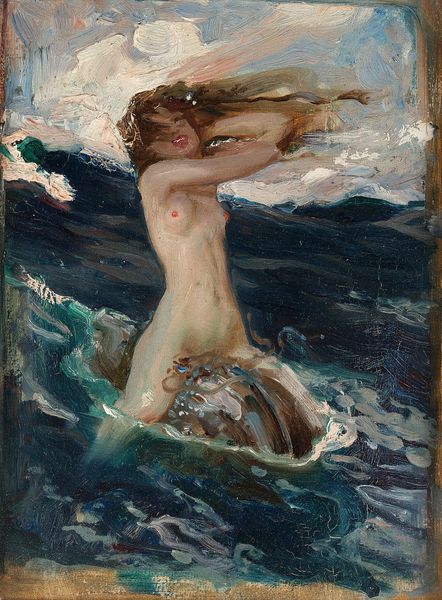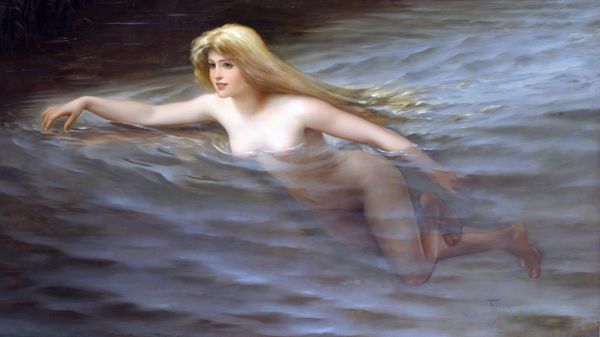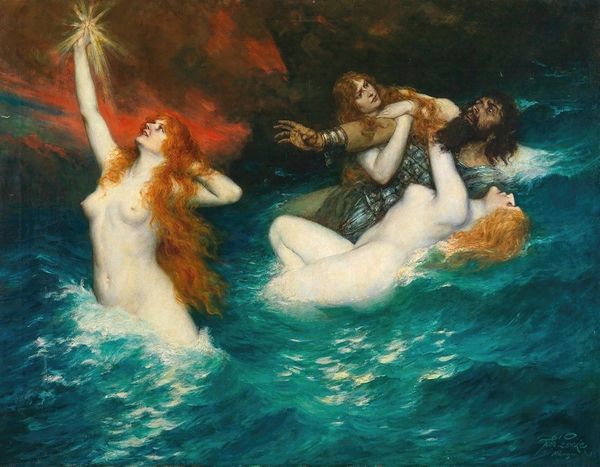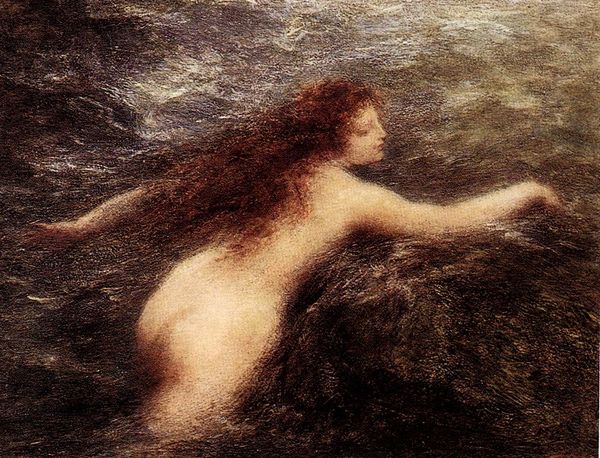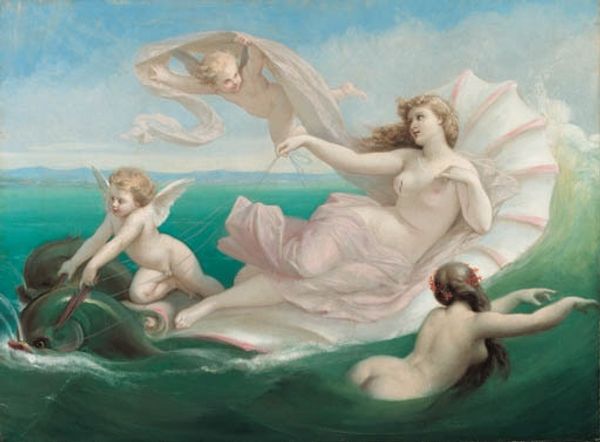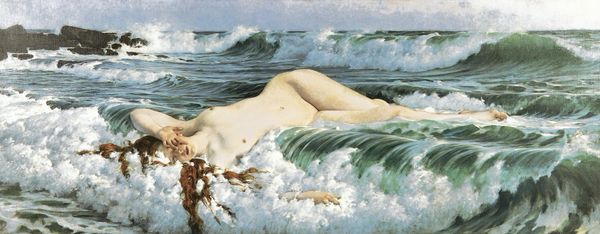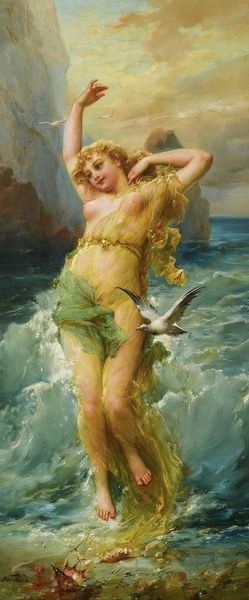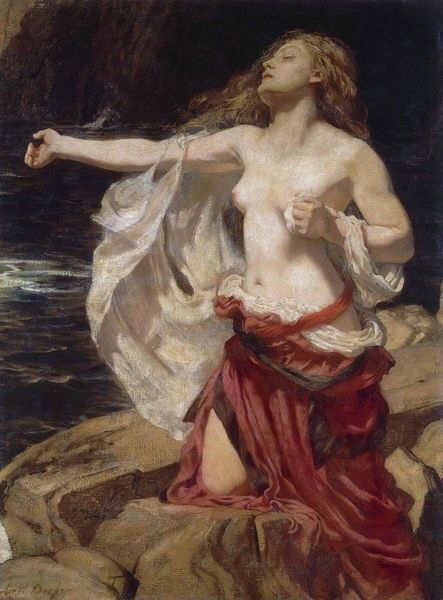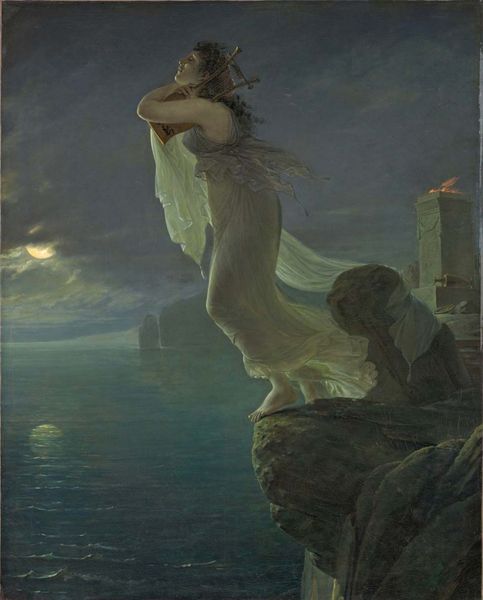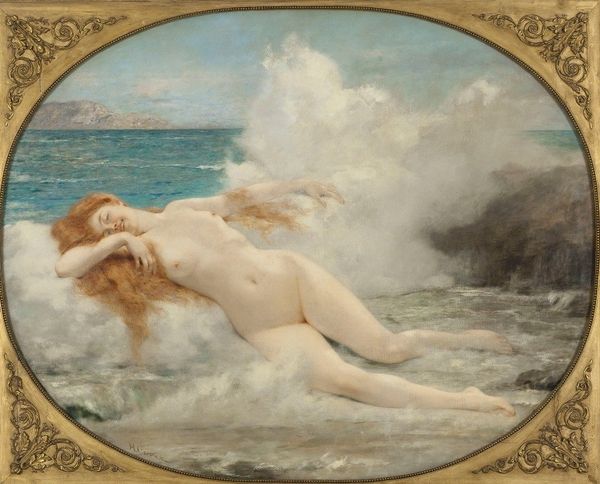
Copyright: Public Domain: Artvee
Curator: Herbert James Draper's painting, "Flying Fish," circa 1910, presents a captivating scene. Editor: The water dominates, churning around the pale figure—it feels so tactile, almost like you could reach out and feel the cold spray. The energy of the waves is palpable, especially with that deep blue hue achieved through oil paint, so prominent. Curator: Indeed. Draper, rooted in Romanticism and Realism, often depicted mythological themes, as you can observe. The composition draws upon historical painting traditions, specifically classical depictions of the human form integrated within an environmental setting. It showcases both beauty and vulnerability in what could be interpreted as an encounter or a pursuit. Editor: Agreed. Look how the human form reaches upward as if striving towards an unachievable goal, and its vulnerability almost underscores a poignant interplay between the materiality of our existence and the ethereal quality of Romantic aspirations. Draper's oil technique enhances that contrast—the sheer amount of pigment used in those waves gives a sculptural quality versus the light airy depiction of those fish. Curator: The nude figure, set amidst this turbulent sea, recalls imagery from earlier artistic periods and reflects the era's changing views on gender, beauty ideals, and societal morality during the early 20th century. How the figure is staged is quite telling for its time. Editor: How fascinating! It really pulls the eye, especially juxtaposed with this swarm of flying fish. Draper really captures something ephemeral in those brushstrokes—making us question not only the painting, but what materials of this Earth are really available to us, or remain always out of reach. Curator: Considering the era in which Draper created his artworks, it’s captivating to observe this blend of historical and aesthetic standards against evolving societal dynamics. It opens a window onto how art itself contributes to our understanding of that specific intersection. Editor: Exactly, thinking about process and material is something powerful in how Draper composed this, and how the materials engage in themes. A poignant visual poem if I’ve ever seen one!
Comments
No comments
Be the first to comment and join the conversation on the ultimate creative platform.
